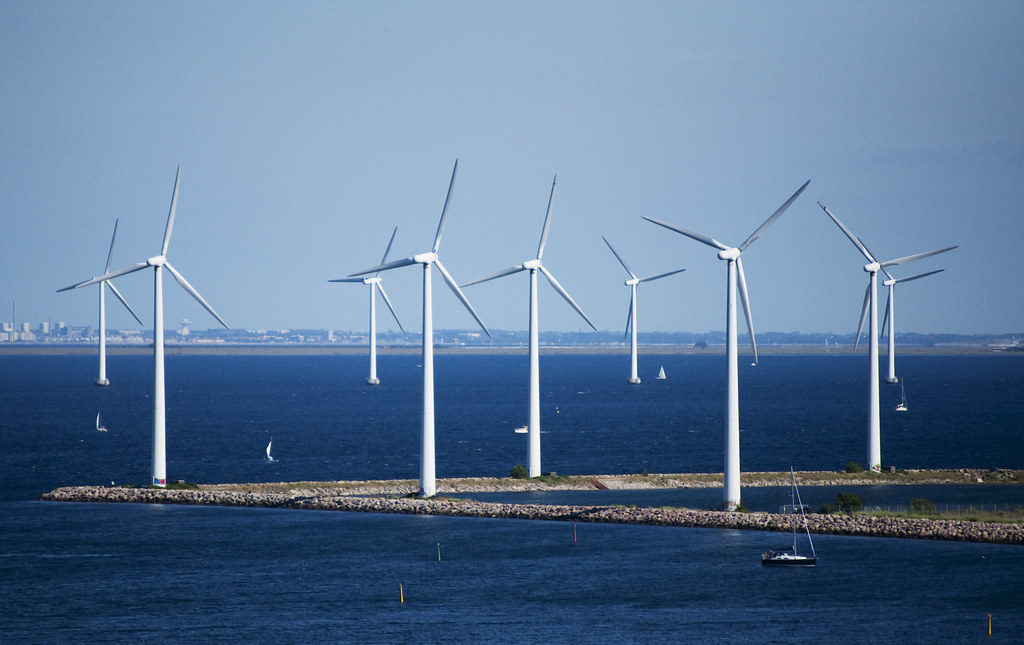It’s more important than ever to think about the prospect of producing your own electricity as a result of the uncontrollably rising cost of energy.
Solar power appears to receive the most attention when it comes to domestic renewable energy sources. But have you ever thought about setting up a windmill at your house?
Using a natural resource and lowering your carbon footprint are two terrific reasons to install a home wind turbine.
But what is the price of a home wind generator? Are there any disadvantages to owning one, too? Is it cheaper than installing solar panels on the roof?
A modest wind turbine’s installed price might range from $300 to $75,000!
How do you choose one, and is the investment worthwhile, given the wide range in prices?
We’ll discuss the factors influencing wind turbine prices in this article and address all of your inquiries.
Wind Turbines: An Overview

A wind turbine is a machine that transforms wind energy from kinetic to electrical.
You may now purchase small wind turbines to generate electricity for your home, and wind farms made up of larger wind turbines are contributing an increasing amount of our world’s energy supply.
Three blades that revolve around a horizontal axis are typical for wind turbines. An electrical generator is turned by the blades’ rotation.
A wind turbine’s capacity to produce power is influenced by a number of variables, including:
- The typical wind speed where you live
- The turbine’s blades’ height
- The site of the installation
- The generator’s effectiveness
You can utilize wind turbines to power your complete house or only use them to reduce your electric bill in part.
Home wind turbines come in two primary categories:
- Roof Mounted: If your home has a high roof and is subject to strong winds, a roof-mounted wind turbine might be advantageous. They have a power range of 0.5 kW to 2.5 kW. They won’t be able to meet all of your electricity needs unless your house is tiny and your consumption is minimal.
- Free Standing: Although they are more expensive to purchase and install, free-standing offshore wind turbines are able to generate enough electricity to run an entire home.
Home Wind Turbines: Cost Of Ownership
Owning a wind turbine comes with two main expenses:
- The turbine’s initial price as well as any installation costs
- The regular maintenance costs
According to the American Wind Energy Association (AWEA), a wind turbine’s initial cost can range from $2,000 to $5,000 per kilowatt of power capacity.
Thus, if you want the turbine to provide all of your electricity, you might require a 15 kW turbine, which would cost between $30,000 and $75,000 (depending on the size of your house and how much energy you use).
The yearly average cost of maintenance is between $200 and $300, which is rather affordable.
Wind turbines typically require between five and fifteen years to recover their initial investment. If you reside in a location with high wind speeds and/or obtain government incentives for establishing a renewable energy system, you may be able to reduce this time frame.
Choosing The Right Wind Turbine
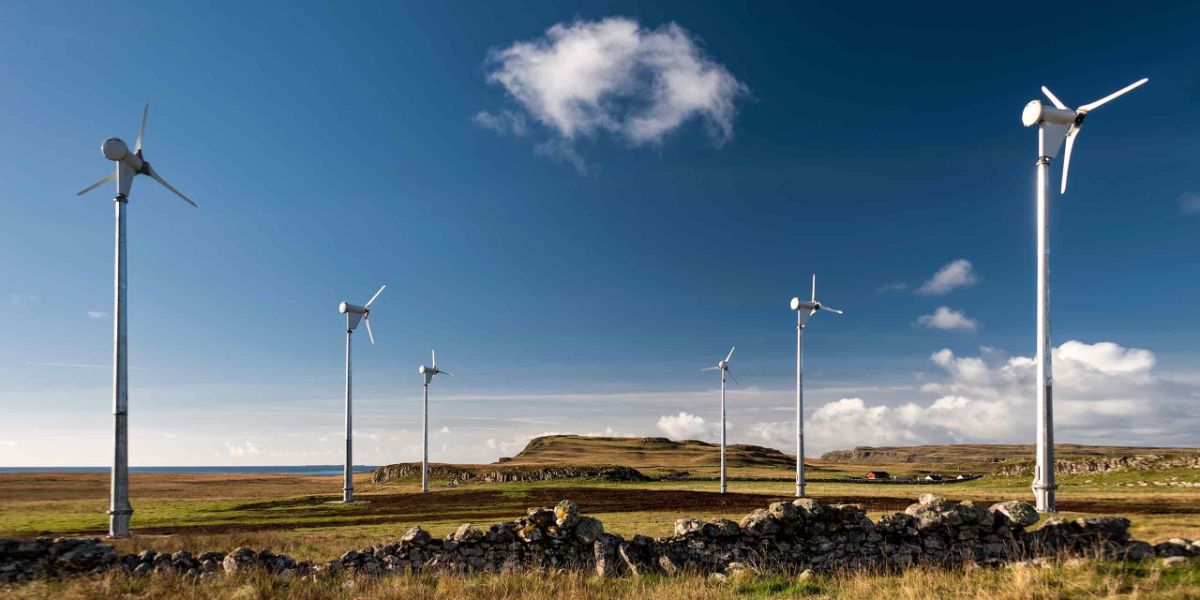
Calculate Your Energy Usage
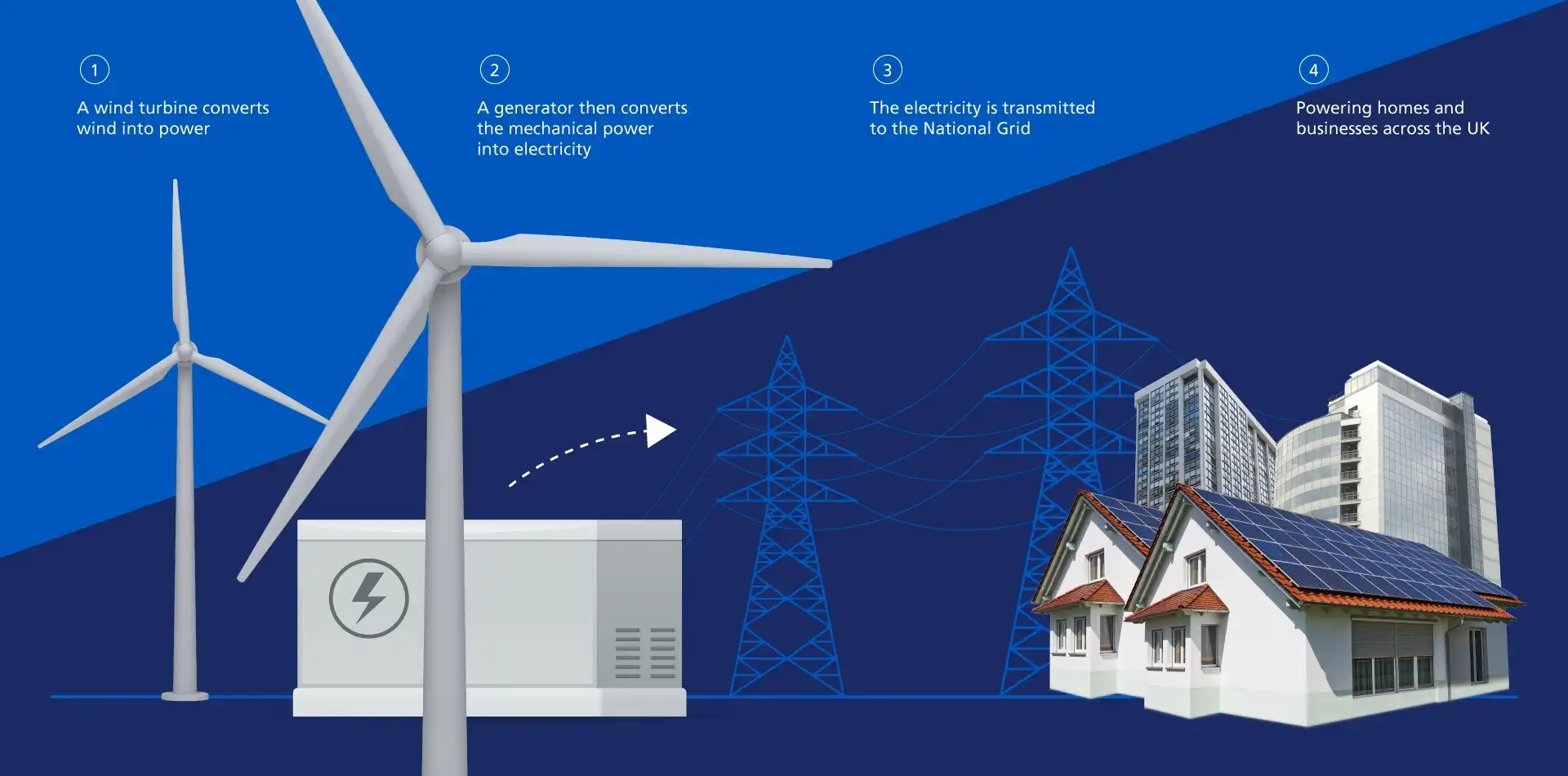
Calculating your energy needs is the first step in picking a wind turbine that will work for you. This will help you determine the size of turbine you need to buy and how much power you need to produce.
Simply add up the kWh (kilowatt-hours) used by all the appliances and devices in your home to determine your energy consumption. This information can be found in the owner’s manual or on the energy label of the appliance.
As an alternative, review previous energy bills to acquire a solid understanding of historical usage.
Calculate Your Capacity Factor
The amount of wind energy you may reasonably expect to produce at your location is indicated by your capacity factor.
You need to be aware of the typical wind speed in your location in order to calculate your capacity factor. When you have that data, just enter it into this formula:
(Average Wind Speed)/(Capacity Factor) (Rated Wind Speed)
Alternatively, you can use the 17% average capacity factor for the United States as of 2018, according to data from the Department of Energy.
You can estimate your annual electricity production using the calculation below using this average of 17%:
Kilowatt-hours per year are equal to 8,760 hours per year multiplied by the power rating (kW) and the capacity factor.
Hence, for instance, a 15 kW turbine will generate about 22,338 kWh annually (8,760 x 15 x 0.17).
Identify The Perfect Location
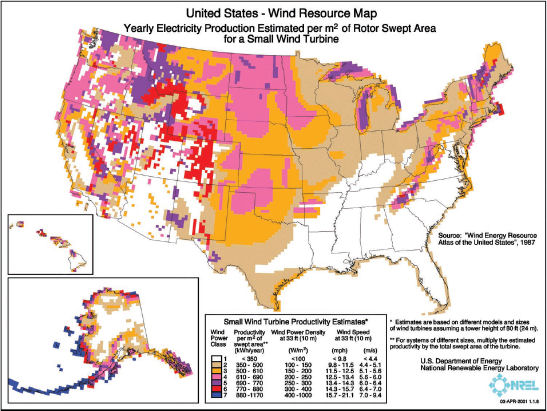
While choosing the ideal location for your wind turbine, wind and distance are two considerations to bear in mind:
- Wind: This one should be quite clear. The location of the turbine should be as windy as possible. It should ideally be high (aim for 30 feet above everything within 300 feet of it) and upwind of any obstacles.
- Distance: Although it might not be as evident, distance is just as crucial! The battery storage facility and wind turbine must be as close as feasible to one another. Electricity is wasted as it travels down cables, thus the more it has to travel, the more you lose.
Installation of Wind Turbines
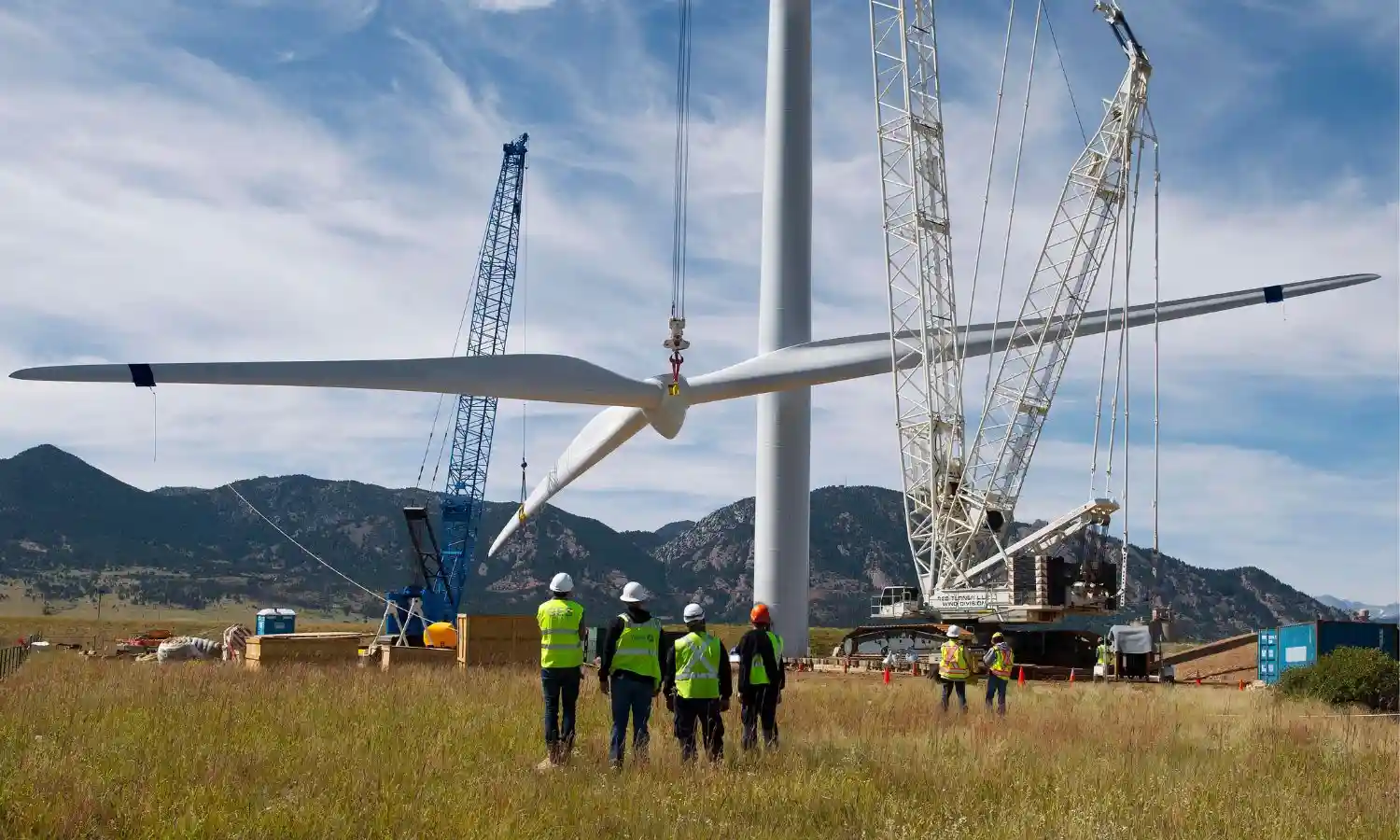
Depending on the size and design of the turbine you select, the installation process can change.
While larger turbines will need a professional team, smaller, lighter ones can be installed by a licensed electrician or adept do-it-yourselfer.
Typically, installation costs range from $500 to $2,000, so plan accordingly.
Also, it’s a good idea to confirm with your local planner that you do not require any additional federal approvals before shelling out money for a new wind turbine and installation. Although you typically don’t, it never hurts to check.
Maintenance of Wind Turbines
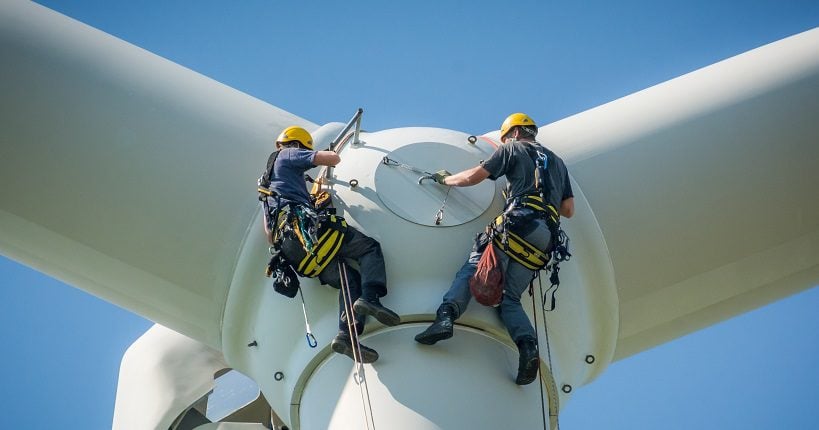
Wind turbines need routine maintenance, just like any other mechanical equipment, to keep them functioning properly.
The good news is that most of this upkeep may be performed by the homeowner, including:
- Maintenance of the blades: Producing electricity might be affected by dirty or damaged wind turbine blades. Check the blade every six to twelve months. If they’re unclean, fix them or get new ones.
- Maintenance of bearings: Bearings minimize friction, which results in less wear and higher output. Check the bearings for appropriate lubrication, tightness, and signs of wear or corrosion every 6 to 12 months. Apply a little layer of oil if the bearings are dry. Use just enough to prevent the liquid from leaking into the machine’s electrical parts.
- Gearbox Upkeep: The gearbox converts the blades’ sluggish rotation into a faster rotation that the generator can use to produce electricity. Check the gearbox every six to twelve months. If there is blue or black grease on your turbine, your gearbox is wearing out too quickly. In accordance with the manufacturer’s instructions, perform routine oil changes.
- Generator Upkeep: Your generator converts the mechanical energy your turbine produces into electrical energy. Similar to the blades, a dirty generator loses efficiency. Every 6 to 12 months, check for rust, grime, and debris and clean up as necessary.
- Maintenance of the inverter: If the inverter is unclean, it will not produce energy as effectively as clean blades or a clean generator. Every six to twelve months, inspect and clean as necessary.
- Maintenance on the tower: If your wind turbine is situated on a tower rather than the roof, you should frequently check to make sure that any screws or bolts are secure. If they are, just tighten them again.
Of course, you should always leave more difficult repairs to a professional. The untrained should not play around with electricity!
Pros Of Wind Turbines
- Lower Electric Bills: Saving money on your energy bill is the most obvious advantage of owning a home wind turbine. Your electric bill might be reduced by 50% to 100%, depending on the size of your system.
- Home Value Increase: Adding a home wind turbine can raise the value of your house. Homes with solar panels installed sell for around $15,000 more than comparable homes without them, according to a Berkeley Lab research. It can be difficult to make an exact direct comparison, but it seems sense that a wind turbine should increase the value of your house as well.
- Tax credits for renewable energy: The federal government once provided a tax credit ranging from 22% to 30% for the installation of wind turbines.
Cons Of Wind Turbines
- Expense up front: For some people, the price up front of a home turbine can be a barrier. The system will eventually pay for itself through energy savings, and there are numerous financing options available.
- Noise: When they are operating, home turbines can produce some noise. Usually, you can only hear this noise if you’re really next to the turbine.
- Visual Impact: Some individuals think that residential wind turbines are ugly. Nonetheless, this is a matter of taste, and a lot of individuals find them attractive visually.
Other Wind Turbines Cost And Types
This article primarily focuses on a wind turbine powerful enough to run a whole home.
Several types of residential wind turbine systems exist, nevertheless, such as:
- Microturbine: These are little 400 watt-producing wind turbines. The power supply for a particular equipment, like a water heater or electric bike, is often supplemented by them. Typically, a tiny wind turbine costs no more than $200.
- Combination wind and solar turbine: Some tiny wind offshore turbines have solar panels built right into them to increase output. They may cost as much as $2,000.

Frequently Asked Questions
In 2023, How Much Does a Wind Turbine Cost Initially?
The average wind turbine has 2-3 MW of power, hence they typically cost $2–4 million. According to studies on the operational costs of wind turbines, operation and maintenance cost an additional $42,000–$48,000 annually.
How Much Electricity Does a Wind Turbine Produce?
According to the 2021 edition of the U.S. Department of Energy’s Land-Based Wind Market Report, the average wind turbine in the United States would produce over 843,000 kWh per month at a capacity factor of 42%, which is enough electricity for more than 940 typical U.S. houses.
How fast does a wind turbine spin?
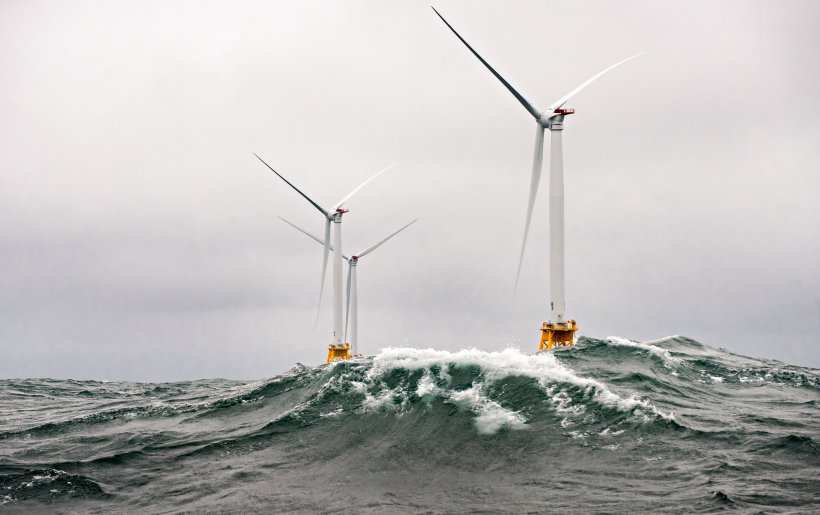
The low-speed shaft, which is attached to the rotor and rotates between 8 and 20 times per minute, is a component of the turbine’s powertrain.
How Long Does A Home Turbine Last?
Home and most commercial wind turbines have a 20-year lifespan on average, and maintenance is needed regularly every six months.
Final Thoughts
You may now determine if this renewable energy source is ideal for you after learning everything there is to know about house turbines.
A home turbine might be the best choice if you want to minimize greenhouse gas emissions while also saving money on your electric bill.
Just make sure to do your homework and contrast various types and commercial wind turbine manufacturers before making a purchase.
Do you currently have a tiny windmill on your roof? Or perhaps you might install a big tower home wind system in your yard?
Are you satisfied with the power savings from onshore wind turbines? Send us a message to let us know.

